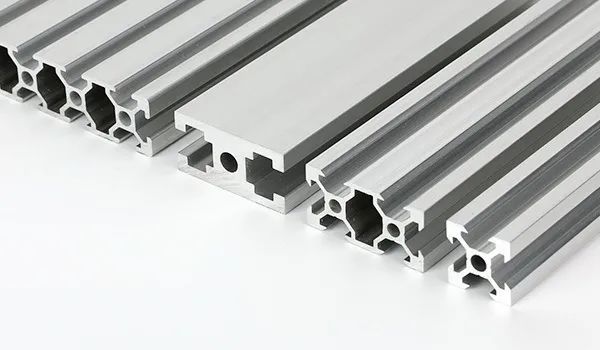Trade War Gold and Silver Remove Haze, Aluminum Calm Copper Tangle
Release time:
2018-03-28
On March 23, the United States announced that it would take measures to impose tariffs on Chinese products, triggering trade frictions between China and the United States. We believe that the impact of Sino-US trade and non-ferrous metals industry can be analyzed from two angles: 1) from the perspective of risk aversion: the main impact varieties are gold and silver, and the trade war triggered panic index continues to rise, currently surpassing the VIX index center of 2010 to date by about 36%, which is good for risk aversion trading of precious metals; 2) From the perspective of supply and demand pattern, it mainly affects the demand for aluminum and copper; Aluminum products are exported to the United States, accounting for 1.8, the impact of the trade war on copper remains to be seen as compared to the limited impact of demand growth; copper exports account for about 2.7 per cent and supply and demand have a greater marginal impact on prices. Gold: weak dollar cycle expectations, overlay risk aversion to improve good gold safe-haven trading trade trade war led to increased panic, good gold safe-haven trading. Although the recent U.S. interest rate hike is theoretically negative for gold, but from historical data, the interest rate hike dollar index in the short term may be thorny rise. We believe that the dollar index depends more on the U.S. relative to the global GDP ratio, the current global monetary policy tends to be in the same direction, according to quarterly GDP data, the U.S. relative economic strength peaked in 2015, is still in a weak phase. Silver: With the benefit of increased risk aversion, high gold and silver ratio is expected to meet the repair market Sino-US trade war led to an increase in risk aversion, also good for precious metal silver. The current gold and silver ratio in the past 40 years for the third time to reach more than 70, the past gold and silver ratio in the high probability of silver ushered in the repair market. And silver's industrial properties are strong, following the steady growth of downstream demand for new energy, electronic communications, etc., the weak dollar cycle is expected, we expect silver prices to remain high volatility. Antaike forecasts that silver supply will grow at about 1.8 per cent in '18 and that mineral production will continue to decline after '19; demand is expected to grow at 2.5 per cent in '18. Overall, the supply and demand surplus declined in 18 years, and the overall market remained short of supply in 19 years. Aluminum: The limited proportion of aluminum products exported to the United States has little impact, and the supply and demand in the domestic market is gradually becoming tense. From a global perspective, the global shortage of electrolytic aluminum is about 1.4 million tons in 2017. Even if trade frictions intensify, the fact that the shortage of electrolytic aluminum overseas will be difficult to make up for in 2-3 years through the increase of overseas production capacity. The impact of the trade war on domestic aluminum exports is also limited, but may increase overseas production costs. In view of the current Sino-US trade friction, the domestic export of aluminum-containing products in 2017 was about 6.88 million tons, accounting for 18.8 of the total domestic electrolytic aluminum production, of which about 1.03 million tons were exported to the United States, accounting for 2.8. The trade friction involves about 650000 tons of foil, plate and strip products, accounting for 1.8. Compared with the domestic demand growth rate of about 6% for electrolytic aluminum, the impact is basically negligible. Copper: the price margin is sensitive, the impact of the trade war remains to be seen, the situation of short supply is forming copper prices short-term impact by the U.S. interest rate hike cycle, the medium-term mainly depends on the fundamentals. From the perspective of Sino-US trade friction, because the marginal impact of copper supply and demand on prices is greater, it may have some negative impact. In 2017, the total domestic copper processing volume was about 18.15 million tons, and the export volume was about 480000 tons, accounting for about 2.7 percent of exports. However, the volume exported to the United States cannot be judged due to lack of data. However, the global refined copper supply gap in 2017 was about 210000 tons. Whether the impact on supply and demand remains to be seen. According to WBMS statistics, the global supply of copper is in short supply.
Gold: Weak dollar cycle expectations, overlay risk aversion to improve good gold safe-haven trading
trade war led to increased panic, good gold safe-haven trading. Although the recent U.S. interest rate hike is theoretically negative for gold, but from historical data, the interest rate hike dollar index in the short term may be thorny rise; but the long time span under the dollar index is likely to decline. We believe that the dollar index depends more on the U.S. relative to the global GDP ratio, the current global monetary policy tends to be in the same direction, according to quarterly GDP data, the U.S. relative economic strength peaked in 2015, is still in a weak phase.
Silver: With the benefit of increased risk aversion, high gold and silver ratio is expected to meet the repair market
Sino-US trade war led to increased risk aversion, also good precious metal silver. The current gold and silver ratio in the past 40 years for the third time to reach more than 70, the past gold and silver ratio in the high probability of silver ushered in the repair market. And silver's industrial properties are strong, following the steady growth of downstream demand for new energy, electronic communications, etc., the weak dollar cycle is expected, we expect silver prices to remain high volatility. Antaike forecasts that silver supply will grow at about 1.8 per cent in '18 and that mineral production will continue to decline after '19; demand is expected to grow at 2.5 per cent in '18. Overall, the supply and demand surplus declined in 18 years, and the overall market remained short of supply in 19 years.
Aluminum: The limited proportion of aluminum products exported to the United States has little impact. The supply and demand in the domestic market are gradually becoming tense.
From a global perspective, the global electrolytic aluminum shortage in 2017 is about 1.4 million tons. Even if trade friction intensifies, the fact that the overseas electrolytic aluminum shortage is difficult to make up for in 2-3 years through the increase of overseas production capacity. The impact of the trade war on domestic aluminum exports is also limited, but may increase overseas production costs. In view of the current Sino-US trade friction, the domestic export of aluminum-containing products in 2017 was about 6.88 million tons, accounting for 18.8 of the total domestic electrolytic aluminum production, of which about 1.03 million tons were exported to the United States, accounting for 2.8. The trade friction involves about 650000 tons of foil, plate and strip products, accounting for 1.8. Compared with the domestic demand growth rate of about 6% for electrolytic aluminum, the impact is basically negligible.
Copper: The price margin is sensitive, the impact of the trade war remains to be seen, and the shortage of supply is forming
Copper prices are impacted by the U.S. interest rate hike cycle in the short term, and the medium term depends mainly on fundamentals. From the perspective of Sino-US trade friction, because the marginal impact of copper supply and demand on prices is greater, it may have some negative impact. In 2017, the total domestic copper processing volume was about 18.15 million tons, and the export volume was about 480000 tons, accounting for about 2.7 percent of exports. However, the volume exported to the United States cannot be judged due to lack of data. However, the global refined copper supply gap in 2017 was about 210000 tons. Whether the impact on supply and demand remains to be seen. According to WBMS statistics, the global supply of copper is in short supply.
Contact Information
Customer Service Tel: +86-539-7177878
Mailbox: kemet@sdkemet.com
Zip Code: 273400
Address: Linyi City, Shandong Province
Copyright©2023 Kemet New Materials Technology Co., Ltd. All Rights Reserved





